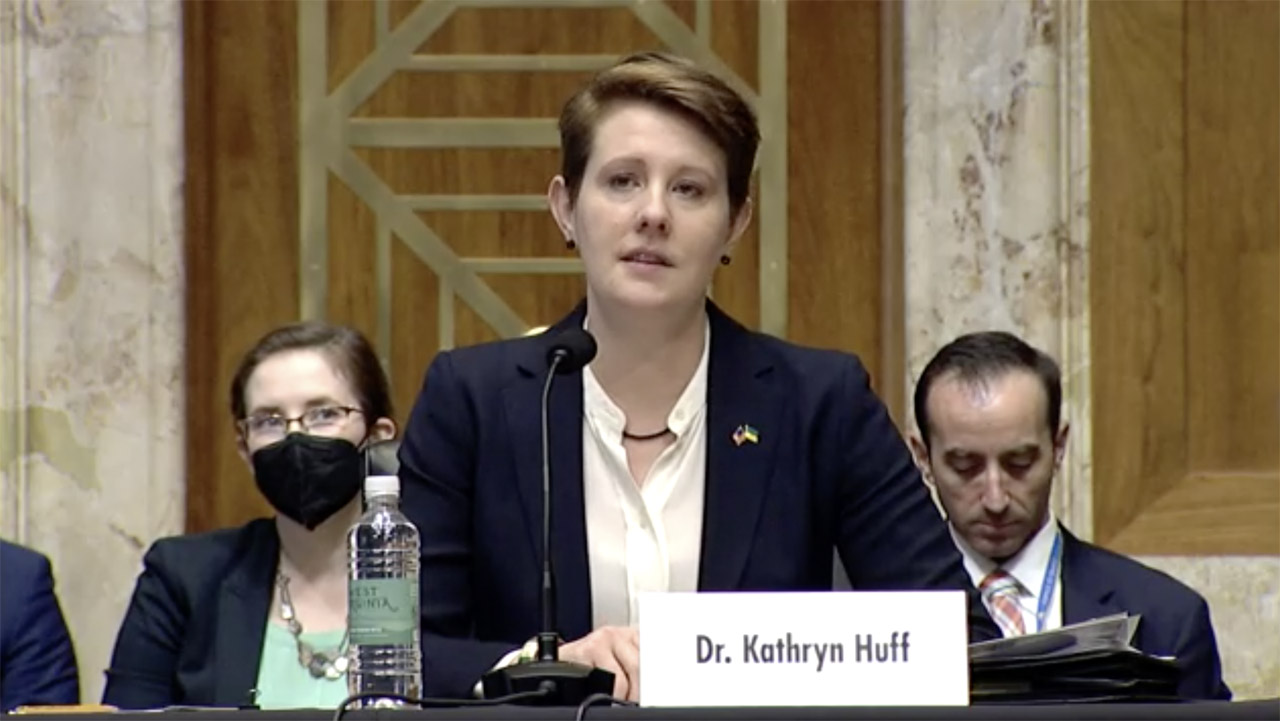U.S., Philippines agree to boost nuclear cooperation

The United States and the Philippines recently signed a memorandum of understanding on strategic civil nuclear cooperation to help boost the development of the latter’s nuclear energy program.
Published since 1959, Nuclear News is recognized worldwide as the flagship trade publication for the nuclear community. News reports cover plant operations, maintenance and security; policy and legislation; international developments; waste management and fuel; and business and contract award news.

A message from Goodway Technologies
Ensuring Safety and Cleanliness: The Crucial Role of Industrial Vacuums in Nuclear Power Facilities

The United States and the Philippines recently signed a memorandum of understanding on strategic civil nuclear cooperation to help boost the development of the latter’s nuclear energy program.

In keeping with the ringing endorsement of nuclear energy it gave in January, the Czech Republic continues moving forward with plans for new reactor construction.

International Atomic Energy Agency director general Rafael Mariano Grossi said on Wednesday that he remains “gravely concerned” about Ukraine’s nuclear sites amid the ongoing Russian invasion and stressed the urgency of reaching an agreement on a framework that would enable his agency to provide technical assistance to ensure the safe and secure operation of those facilities.

Wilmington, N.C.–based GE Hitachi Nuclear Energy has signed a memorandum of understanding with Kärnfull Next—a new company and a wholly owned subsidiary of Swedish firm Kärnfull Future AB—to collaborate on the deployment of GEH’s BWRX-300 small modular reactor in Sweden.
Having made significant investments in nuclear energy over the past year and a half (including C$27.2 million announced just last week), the Canadian government bewildered nuclear advocates earlier this month with its Green Bond Framework.
Released on March 3, the framework specifically excludes nuclear energy, along with the transportation, exploration, and production of fossil fuels, arms manufacturing, gambling, the manufacture and production of tobacco products, and the manufacture and production of alcoholic beverages.
.jpg)
The Canadian government has announced an investment of C$27.2 million (about $21.6 million) in Westinghouse Electric Canada to support the development of the company’s eVinci microreactor technology.
François-Philippe Champagne, Canada’s minister of Innovation, Science, and Industry, made the announcement on March 17 during a visit to the company’s Burlington, Ontario, facility.

Holcomb
Indiana has joined the growing list of states looking into small modular reactors for future energy production as their coal-fired plants are retired.
Gov. Eric Holcomb on March 18 signed into law S. 271, which allows and incentivizes the construction of SMRs in Indiana. Introduced on January 10 and sponsored by state Sens. Eric Koch (R., Bedford) and Blake Doriot (R., Goshen), S. 271 passed in the Senate on February 1 in a 39–9 vote and in the House on February 22 by a vote of 70 to 22.
Specifics: S. 271 requires the Indiana Utility Regulatory Commission (IURC), in consultation with the state’s Department of Environmental Management, to adopt rules concerning the granting of certificates of public convenience for the construction, purchase, or lease of SMRs, defined as reactors with a rated electric generating capacity of not more than 350 MW. The rules are to be adopted by July 1, 2023.

Finnish utility Fortum Power and Heat Oy has submitted an application to Finland’s Ministry of Economic Affairs and Employment to operate the two reactors at the Loviisa nuclear power plant through 2050. The current operating licenses for Loviisa-1 and -2 expire in 2027 and 2030, respectively.

The White House Office of Science and Technology Policy and the Department of Energy cohosted the White House Summit on Developing a Bold Decadal Vision for Commercial Fusion Energy on March 17. The livestreamed event brought together fusion leaders from government, industry, academia, and other stakeholder groups to showcase recent achievements in fusion research and discuss the administration’s strategy to support the development of commercial fusion energy. Energy Secretary Jennifer Granholm’s announcement of a new agency-wide fusion energy initiative and a funding opportunity worth $50 million for magnetic confinement fusion research made March 17 a lucky day indeed for the U.S. fusion energy community.

Barrasso
In the latest effort by the federal government to sanction Russia over its invasion of Ukraine, Sen. John Barrasso (R., Wyo.) last week introduced legislation to prohibit the importation of Russian uranium to the United States.
The Biden administration banned imports of Russian oil, liquefied natural gas, and coal, via executive order on March 8.
Barrasso’s bill, S. 3856, was introduced on March 16, with three of his fellow GOP lawmakers as cosponsors: Sens. Kevin Cramer (R., N.D.), Cynthia Lummis (R., Wyo.), and Roger Marshall (R., Kan.).
“The time is now to permanently remove all Russian energy from the American marketplace,” said Barrasso, ranking member of the Senate Energy and Natural Resources (ENR) Committee. “We know Vladimir Putin uses this money to help fund his brutal and unprovoked war in Ukraine. While banning imports of Russian oil, gas, and coal is an important step, it cannot be the last. Banning Russian uranium imports will further defund Russia’s war machine, help revive American uranium production, and increase our national security.”

In a move motivated by Russia’s invasion of Ukraine and the sky-high energy prices hitting Europe as a result, the Belgian government last Friday announced its intention to extend the operational life of two of its nuclear power reactors, Doel-4 and Tihange-3, through 2035.

In the 13 months since a fuel element failure triggered a scram of the research reactor at the National Institute of Standards and Technology’s NIST Center for Neutron Research (NCNR), the event and its causes have been scrutinized by both NIST and the Nuclear Regulatory Commission.
Initial conclusions from an NRC special inspection released on March 16 confirm that while public health and safety was maintained during and after the event, and doses to reactor facility staff were well below regulatory limits, a safety limit was violated when the temperature of the fuel cladding of a single fuel element in the 20-MWt research reactor reached a temperature high enough to partially melt the element.
Europeans are taking resolute steps to reduce their output of climate-changing gases, but some countries are moving in the wrong direction.

Europeans are taking resolute steps to reduce their output of climate-changing gases, but some countries are moving in the wrong direction.
Many countries are adding solar and wind, which are low-carbon energy sources. Some have moved to biomass, the value of which as a climate cure is not clear. A few are adding reactors, while others are defining nuclear as dirty energy and natural gas as “clean” and are changing their generation mix accordingly.
The State Nuclear Regulatory Inspectorate of Ukraine (SNRIU) informed the International Atomic Energy Agency yesterday that all safety systems at the Zaporizhzhia nuclear power plant in southeastern Ukraine were fully functional, one day after the site lost connection to a third external power line linking it to the national electricity grid.

The Senate Energy and Natural Resources Committee met yesterday to consider the nomination of Kathryn Huff to head the Department of Energy’s Office of Nuclear Energy (NE). President Biden selected Huff to fill the top spot at NE in January.
A magnitude 7.3 earthquake struck off the east coast of Honshu, Japan, at 11:36 p.m. (local time) yesterday, resulting in significant ground shaking near the epicenter, much structural damage, at least four deaths, and a power outage affecting more than 2 million households, including some 700,000 in Tokyo. (According to Japanese utility Tepco, power was restored to all households by 2:52 a.m. on Thursday.)

Nebraska Public Power District and Entergy have agreed to terminate their nearly 20-year-old support services agreement for the Cooper nuclear power plant.
NPPD said on Monday that it intends to continue operating the plant—Nebraska’s sole power-generating nuclear facility—and will use Entergy and other available industry resources, as appropriate.
The Nuclear Regulatory Commission offered an overall reassuring message last week regarding the performance of the nation’s commercial reactors in 2021.
“The work of the nuclear power plant operators for almost every reactor fully meets our stringent safety and security performance objectives,” said Andrea Veil, director of the NRC’s Office of Nuclear Reactor Regulation. “Yet even those high-performing units will undergo thousands of inspection hours this year under our normal ‘baseline’ inspection program.”

David Edsey
This past October, the House Select Committee on the Climate Crisis held a hearing titled “Good for Business: Private Sector Perspectives on Climate Action.” The hearing reviewed perspectives on the importance of the government’s investments in climate action and how these investments would contribute to job creation and economic growth. Those testifying included the founder of a solar energy company, the head of communications and policy for a popular outdoors clothing company, a former deputy energy secretary for the Department of Energy, and an executive from an insurance company.
While the solar company founder and the communications head spoke out against nuclear energy, the former deputy energy secretary, during testimony, was in favor of it. The insurance executive, David Edsey, also talked in support of nuclear during the committee’s Q&A session after testimony.

Europe’s first EPR, Unit 3 at Finland’s Olkiluoto nuclear power plant, was connected to the nation’s grid on March 12, Teollisuuden Voima Oyj (TVO), the facility’s owner and operator, has announced.
Olkiluoto-3 is also the first new Finnish reactor in four decades, and one of only three new reactors in Europe in the past 15 years. (Romania’s Cernavoda-2 began supplying electricity to the grid in August 2007, and Belarus’s Belarusian-1 in November 2020.)